BYD Dolphin vs Hyundai IONIQ 5 – Differences & prices compared
Compare performance, boot capacity, efficiency and price at a glance.
Find out which car is the better choice for you – BYD Dolphin or Hyundai IONIQ 5?
Costs and Efficiency:
When it comes to price and running costs, the biggest differences usually appear. This is often where you see which car fits your budget better in the long run.
BYD Dolphin has a noticeable advantage in terms of price – it starts at 29700 £, while the Hyundai IONIQ 5 costs 38500 £. That’s a price difference of around 8794 £.
In terms of energy consumption, the advantage goes to the Hyundai IONIQ 5: with 15.60 kWh per 100 km, it’s minimal more efficient than the BYD Dolphin with 15.90 kWh. That’s a difference of about 0.30 kWh.
As for range, the Hyundai IONIQ 5 performs noticeable better – achieving up to 570 km, about 143 km more than the BYD Dolphin.
Engine and Performance:
Power, torque and acceleration are the classic benchmarks for car enthusiasts – and here, some clear differences start to show.
When it comes to engine power, the Hyundai IONIQ 5 has a convincingly edge – offering 650 HP compared to 204 HP. That’s roughly 446 HP more horsepower.
In acceleration from 0 to 100 km/h, the Hyundai IONIQ 5 is decisively quicker – completing the sprint in 3.50 s, while the BYD Dolphin takes 7 s. That’s about 3.50 s faster.
In terms of top speed, the Hyundai IONIQ 5 performs clearly perceptible better – reaching 260 km/h, while the BYD Dolphin tops out at 160 km/h. The difference is around 100 km/h.
There’s also a difference in torque: Hyundai IONIQ 5 pulls significantly stronger with 770 Nm compared to 310 Nm. That’s about 460 Nm difference.
Space and Everyday Use:
Whether family car or daily driver – which one offers more room, flexibility and comfort?
Both vehicles offer seating for 5 people.
In curb weight, BYD Dolphin is to a small extent lighter – 1658 kg compared to 1955 kg. The difference is around 297 kg.
In terms of boot space, the Hyundai IONIQ 5 offers noticeable more room – 520 L compared to 345 L. That’s a difference of about 175 L.
In maximum load capacity, the Hyundai IONIQ 5 performs to a small extent better – up to 1580 L, which is about 270 L more than the BYD Dolphin.
When it comes to payload, Hyundai IONIQ 5 evident takes the win – 530 kg compared to 410 kg. That’s a difference of about 120 kg.
Who comes out on top?
Overall, the Hyundai IONIQ 5 shows itself to be is largely superior and secures the title of DriveDuel Champion.
It convinces with the more balanced overall package and proves to be the more versatile choice for everyday use.
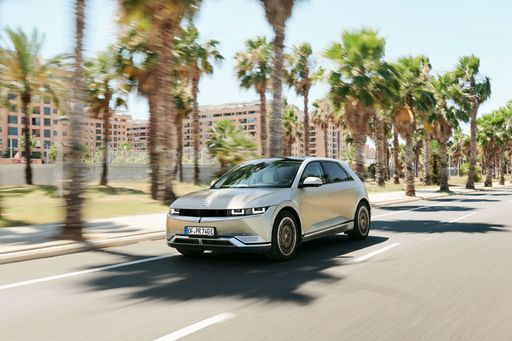
Hyundai IONIQ 5
BYD Dolphin
The BYD Dolphin is making waves in the automotive world with its sleek design and environmentally friendly features. This compact electric vehicle has been designed to offer a comfortable and efficient driving experience for urban commuters. With a focus on sustainability and high-tech innovation, the BYD Dolphin is setting new standards for modern city cars.
details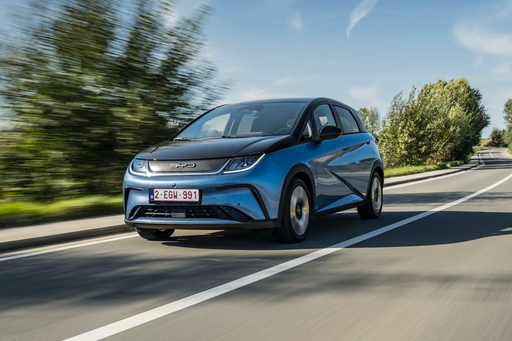 @ press.bydauto.be
@ press.bydauto.be
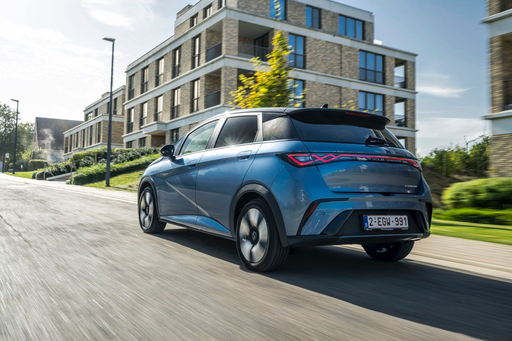 @ press.bydauto.be
@ press.bydauto.be
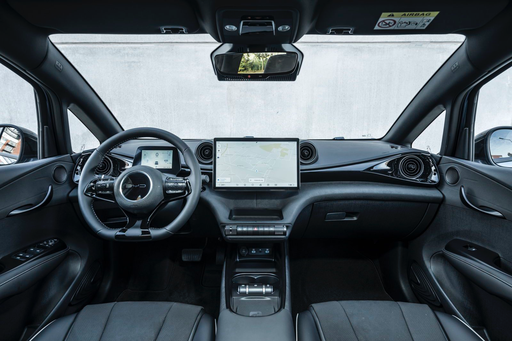 @ press.bydauto.be
@ press.bydauto.be
Hyundai IONIQ 5
The Hyundai IONIQ 5 showcases a bold and futuristic design that captures attention with its striking facade and sharp lines. This electric vehicle offers an impressive blend of performance and efficiency, making it a compelling choice for environmentally conscious drivers. Inside, the spacious and tech-forward interior provides a comfortable and engaging driving experience for both driver and passengers.
details @ hyundai.news
@ hyundai.news
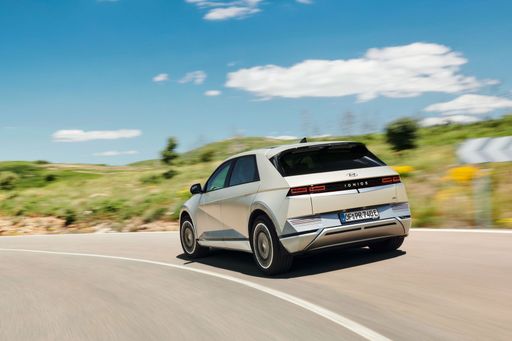 @ hyundai.news
@ hyundai.news
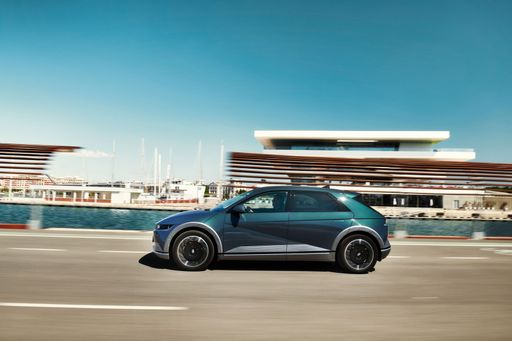 @ hyundai.news
@ hyundai.news
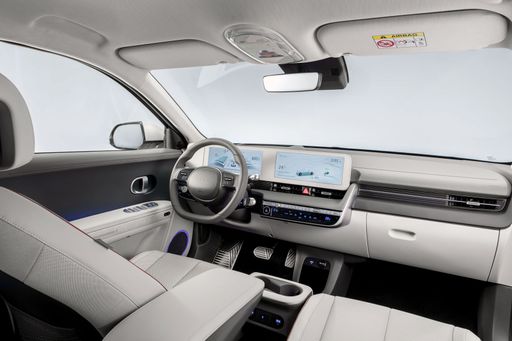 @ hyundai.news
@ hyundai.news
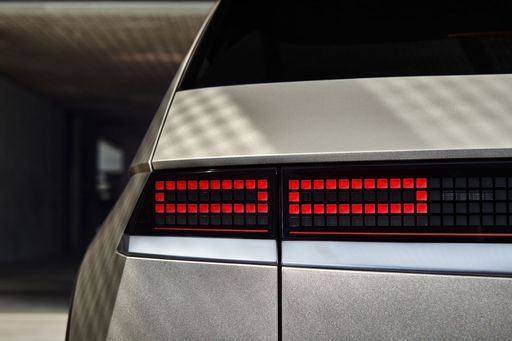 @ hyundai.news
@ hyundai.news

|

|
|
|
|
Costs and Consumption |
|
|---|---|
|
Price
29700 - 31400 £
|
Price
38500 - 64200 £
|
|
Consumption L/100km
-
|
Consumption L/100km
-
|
|
Consumption kWh/100km
15.90 kWh
|
Consumption kWh/100km
15.6 - 21.2 kWh
|
|
Electric Range
427 km
|
Electric Range
440 - 570 km
|
|
Battery Capacity
-
|
Battery Capacity
63 - 84 kWh
|
|
co2
0 g/km
|
co2
0 g/km
|
|
Fuel tank capacity
-
|
Fuel tank capacity
-
|
Dimensions and Body |
|
|---|---|
|
Body Type
Hatchback
|
Body Type
SUV
|
|
Seats
5
|
Seats
5
|
|
Doors
5
|
Doors
5
|
|
Curb weight
1658 kg
|
Curb weight
1955 - 2275 kg
|
|
Trunk capacity
345 L
|
Trunk capacity
480 - 520 L
|
|
Length
4290 mm
|
Length
4655 - 4715 mm
|
|
Width
1770 mm
|
Width
1890 - 1940 mm
|
|
Height
1570 mm
|
Height
1585 - 1605 mm
|
|
Max trunk capacity
1310 L
|
Max trunk capacity
1540 - 1580 L
|
|
Payload
410 kg
|
Payload
385 - 530 kg
|
Engine and Performance |
|
|---|---|
|
Engine Type
Electric
|
Engine Type
Electric
|
|
Transmission
Automatic
|
Transmission
Automatic
|
|
Transmission Detail
Reduction Gearbox
|
Transmission Detail
Reduction Gearbox
|
|
Drive Type
Front-Wheel Drive
|
Drive Type
Rear-Wheel Drive, All-Wheel Drive
|
|
Power HP
204 HP
|
Power HP
170 - 650 HP
|
|
Acceleration 0-100km/h
7 s
|
Acceleration 0-100km/h
3.5 - 8.5 s
|
|
Max Speed
160 km/h
|
Max Speed
185 - 260 km/h
|
|
Torque
310 Nm
|
Torque
350 - 770 Nm
|
|
Number of Cylinders
-
|
Number of Cylinders
-
|
|
Power kW
150 kW
|
Power kW
125 - 478 kW
|
|
Engine capacity
-
|
Engine capacity
-
|
General |
|
|---|---|
|
Model Year
2023
|
Model Year
2024
|
|
CO2 Efficiency Class
A
|
CO2 Efficiency Class
A
|
|
Brand
BYD
|
Brand
Hyundai
|
What drivetrain options does the BYD Dolphin have?
The BYD Dolphin is offered with Front-Wheel Drive.
The prices and data displayed are estimates based on German list prices and may vary by country. This information is not legally binding.
